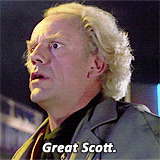Trevor B. Williams's Blog
November 9, 2019
ETERNAL SHADOW is NOW AVAILABLE!
A lifetime goal of mine is now complete. Eternal Shadow, the first novel I’ve ever written to completion, is now published and available for the world to read.
Just… wow. I still can’t believe it.


 The Journey to Publication, In a Nutshell
The Journey to Publication, In a NutshellWork began on Eternal Shadow on February 17, 2017 - back when its title was The Basking. Thanks to my wife - seriously, without her this book would’ve taken years to finish - I managed to complete the first draft in one year. It would be another couple of months before the novel...class="">Work
September 30, 2019
The Science Behind ETERNAL SHADOW #2: Nuclear Reactors in Space
When the world is threatened by a planet-destroying entity, what can we do?
That’s one of the overarching questions which is explored in Eternal Shadow. Given enough time to find an answer - in this case, about ten years - our options aren’t as limited as one would think. A lot of doors can swing open when the difference between decisive action and inaction is total annihilation. Doors swing open, and in the case of the events that play out in my book, one certain technological prejudice is ve...
September 23, 2019
The Science Behind ETERNAL SHADOW #1: First Contact
Am I starting too many series here? I think one can’t have too many series for a blog, especially when it all revolves around science fiction, the sciences, writing, or a mix of all three.
With that said, here’s another series!
“The Science Behind ETERNAL SHADOW” will be another ongoing series which will explore the various concepts I introduce in my novel. During the course of writing this book I’ve spent a lot of time researching the many subjects which coalesce into the story you’ll be rea...
September 9, 2019
"Impossible" Technologies #3: Immortality
There are two aspects of life which everyone can expect: paying taxes and death.
Though tax evasion is a thing, that’s not what I’m talking about today.
I plan to live forever, of course, but barring that I’d settle for a couple thousand years. Even five hundred would be pretty nice— CEO Nwabudike Morgan, "Sid Meier's Alpha Centauri"
The concept of living forever is a fundamental aspect of our existence. Almost every major religion, from Christianity and Hinduism to the ancient Egyptian a...
September 2, 2019
The Writing Zone: Stage 16 - Are Paid Book Reviews Worth It?
I recently posted a question on Twitter to get people’s thoughts on paid, or premium, book reviews versus requesting free reviews in exchange for a free copy of your book.
What are your thoughts regarding paid reviews (ex: Kirkus Reviews, Indie Reader) vs free (ex: honest review in exchange for the novel)?
And the question for the poll: Would you pay to have your book reviewed? Why/why not?
August 19, 2019
"Impossible" Technologies #2: Light Swords
Light is fascinating. As a fundamental constant in our universe, it is impossible to conceive what it would be like without it. Light is not just visible light - the wavelengths which allows us to see all that’s around us. Light is heat. Light is radiation. Light is life.
If some creators of high-tech weaponry have their way, light could be condensed into a sword and used for dishing out death as well.
And maybe - in a possible future - the technology will become condensed enough to allow the u...
August 12, 2019
ETERNAL SHADOW Preorders are now LIVE!
Before getting to the rest of the article, we all know why you’re here. Let’s cut to the chase. =)
Here’s a link to my novel’s paperback preorder page. And for those that want to lock in the digital format, here’s a link to the Amazon Kindle page! The ebook version will release on November 9th - the official launch date. However, the “limited” paperback edition has several perks baked into it, including all buyers receiving it in the mail before launch.
If you’d like to read a chapter or two be...
August 5, 2019
"Impossible" Technologies #1: Ringworlds
Do you sometimes feel like there just isn’t enough space for the human population on Earth? What if there was a place where you could give each person on Earth an entire continent the size of North America all to themselves - and still have room to spare?
Welcome to my “Impossible” Technologies series, with "impossible” in quotations because although what you’ll find here will, in most cases, be considered solely possible in fiction, I’m here to determine just how fictitious these technologica...
July 22, 2019
Making Tough Business Decisions as a Self-Publisher
Nothing personal, it’s just business.
— Otto Berman
The last week was surprisingly challenging. It culminated in a book design decision that, although in the long-run won’t be an issue, really had emotional weight for me. On the one hand, I wanted to stick with my design principles and vision for my novel. On the other hand, the logistical challenges that stacked up against me demanded I make a change.
What HappenedThe last few weeks - well, ever since I decided to go the self-publishing route, really - were really exciting. With the design of my book cover and typesetting finalized, I started ordering paperback proofs of ETERNAL SHADOW. My first proof came from Amazon KDP, my chosen ebook distributor. However, thanks to the advice of another Trevor, I decided to also allow POD (print-on-demand) of my book through KDP as well. For general paperback distribution I chose IngramSpark, a popular choice for self-publishing writers who want their book to get the greatest reach into as many brick-and-mortar bookstores and resellers as possible.
The first proof that arrived had a matte cover which was much darker than expected. Not a problem. I shared the feedback with my designer, Anamaria, who quickly made a series of color adjustments, correcting the issue. The second proof was ordered also from KDP - this time a glossy cover. This one was PERFECT - it satisfied my vision to a T.
“If it looks this good from Amazon, I’m sure it’ll be about the same from Ingram,” I told myself with glee.
Celebrated Too SoonI placed an order for a glossy paperback proof from Ingram immediately after receiving the proof from KDP. When the Ingram proof arrived… I was left both surprised and disappointed. The colors on the book cover were more muted - less poppy and vibrant. More critically, the “part pages” (ETERNAL SHADOW is split into four parts) which demarcate the ending of one part and the start of another had terribly visible white streaks running down their all-black pages.

That page-spanning white streak running from top to bottom was not a design choice.
At first I didn’t understand why this happened with the IngramSpark book and not the KDP book, but that was when I noticed the thickness of the Ingram book. In short, it was about 20% thinner than the KDP proof. THAT was when I dug a bit deeper into details I didn’t think too much about: paper weight.
In summary, paper weight is one value which represents the thickness of paper. The higher the value, the thicker the paper. I checked out KDP first which is where I learned they used 55lb paper for their paperbacks by default (they don’t offer any other size options). Ingram uses 50lb paper, though unlike KDP they do offer some additional options (more on that later). If you’d like to learn more about the variety of paper that exists for book creation, check out this web article from Bookmobile.
This difference in paper weight was the reason for the quality gap: 50lb paper simply cannot handle the printing of all-black on a page - but was that the end of the story?
Thanks to feedback from IngramSpark support, I learned another detail which you’d only find if you dug deep enough into their book design guides: they use inkjet printers for their book creation processes. Inkjet printers! Though Amazon KDP doesn’t disclose anywhere (I had no luck finding details at least) the sort of printers they use for their POD service, evidence would suggest they use laserjet printers, an option which IMO makes more sense than inkjet when you’re talking about printing hundreds, if not thousands, of books a day. After reading about the differences between inkjet and laserjet printers, the likelihood is was the case seemed even higher.
So to tally up the issues:
50lb paper was used vs 55lb paper, resulting in thinner pages which would not take all-black pages well (the problem I saw would likely be very common according to Ingram). Related to this detail: the all-black pages were a bit curled and not straight like the rest of the pages, resulting in the part pages seeming to stick together.
Inkjet printers were used. Combine that with the all-black pages and you get the streaks of lines.
IngramSpark did offer to upgrade the paper weight I was using from 50lb creme to 70lb white… but their numbers matched up with what I found on their website: it would cost an insane fourteen dollars per book to print with 70lb paper. Fourteen dollars would be the cost to print, before applying list price! It would be possible to justify using such thick paper for my novel.
CrossroadsWith this information in my hands, I realized that a tough decision had to be made.
Invert the all-black pages to eliminate the printing issue at IngramSpark, thus allowing me to use their services for physical book distribution to bookstores.
Stick with my original design. This would require me to either find an alternative distributor or use Amazon KDP’s “Expanded Distribution” option.
My gut reaction was to pursue #2. Throwing myself into the Internet, I found many businesses which operated on the same field as IngramSpark such as Xlibris, Lulu, and Blurb. However, my frown continued to grow as the reality of switching to these alternatives really began sinking in. Compared to IngramSpark, just about everyone else charged three dollars more per book which would mean I’d either make virtually nothing per book sold through them or I’d have to increase the book’s list price to compensate, thus locking out potential buyers.
Finding this situation quite distressing, I informed my CP, my wife, and the group of people who won my “Signal Detected” Twitter game about this series of events, seeking advice. Though they all empathized, the general consensus was to invert the black pages. One Twitter game winner, also a beta reader, mentioned that “not having it didn’t affect [his] enjoyment of the beta.” Another winner put it succinctly:
“Publishing is a business.”My CP (such an awesome supporter) beared the brunt of my hem and hawing behind my reluctance to, in retrospect, make the best decision for ETERNAL SHADOW’s internal design. It took a little over a day to fullest embody the choice of inverting the part page colors, but once I came around, the lessons became clear.
If you intend on making any money with your book, even if it’s just a little, you’ll have to ultimately make decisions which will be better for your success - not as a writer, but as the seller of your book. If you decide to self-publish, the buck stops with you. It’s your book and you are in control of every detail behind it. This includes understanding how to best price your novel and who your audience will be. Can you get away with asking for twenty bucks for a paperback novel? From a famous writer, it’s likely, but if this is your debut novel and you’re not famous (yours truly falls in this category on both counts) the answer is almost certainly no. Sure, some people will take the chance on your paperback at that price, but most just won’t part with that much money on an unknown.
I want my book to reach as many people as possible. This means that it has to be competitively priced across the board. This also means that, despite the technology used there, IngramSparks would have to be my primary distributor for paperbacks. They offered the best print price per book, given its page length. This would allow me to offer the best discount to booksellers without breaking even or going in the red while maintaining a competitive list price.
Inverting the all-black pages was not driven by design or vision but by business.
…It just happens that I still like how it all looks.
ETERNAL SHADOW releases on November 9th, 2019!
What decisions have you made (related to self-publishing or otherwise) which were driven more by business than by your personal visions or principles? Share below!
July 15, 2019
Sci-Fi Tropes #3: Artificial Intelligence
I’m sorry, Dave. I’m afraid I can’t do that.
— 2001: A Space Odyssey
We are surrounded by “smart” technology today, from the phones in our pockets to the appliances in our homes. Even certain light bulbs are considered “smart” these days.
I am, personally, a fan of the “Internet of Things” and integrating as much of my home as possible to the point where I could use my phone to control large swaths of it and, in a way, making it aware of my presence when I enter or leave. We’re getting to the point where our house will know more about our habits and behavior than those who live inside it.
But is that a good thing? Allowing the very devices that help us navigate wherever we drive or shop for groceries to also learn our habits, our medical conditions - our wants, needs, and fears - and be able to make decisions on our behalf based on its understanding of us?
The idea that a machine is able to “learn” or “problem-solve” is the textbook definition of artificial intelligence, or “AI”. In reality it’s far more complicated than it sounds as there are different types of AI that exist today from a technical perspective. Examples of this breakdown include search and optimization algorithms (ex: when you use Google to search for cooking recipes), artificial neural networks (ex: AI buying and selling stocks based on a myriad of factors), personality computing (ex: using behavioral psychology to better target specific demographics for marketing campaigns), and logic (ex: mapping out all possible plays in a game of chess before making a move based on the board).
All excellent advances in technology which have continuously brought benefits to scores of disciplines, seen and unseen.
However… when most people think about the idea of AI, discussions usually veer toward the philosophical versus the technological: Can a machine intelligence become equal to human intelligence? Can AI have ethics? Can AI become a conscious living thing - a sentient being?
Will AI try to destroy us the first chance it gets?
Empathy, evidently, existed only within the human community, whereas intelligence to some degree could be found throughout every phylum and order including the arachnida.
— Do Androids Dream of Electric Sheep?, Philip K. Dick
“Let there be automata…”
Artificial intelligence, as a concept, is nothing new. Though the first programmable computer was invented in the 1940s, the idea that artificial constructs could be viewed as living creatures with intelligence is as old as Greek civilization. Hephaestus, the Greek god of fire, metalworking, blacksmiths, and metallurgy (to name a few designations) crafted equipment, weapons, and armor used by other Greek gods. More impressive were his mechanical automations which he created to complete his work. This was around the 6th century BC - over 2,500 years ago.
During the Middle Ages, Jabir ibn Hayyan, an alchemist generally known as the father of chemistry, was supposedly obsessed with takwin, an Arabic term which refers “to the creation of synthetic life in the laboratory.” For Muslim alchemists, takwin was the ultimate goal: to harness the power of life given to them by God and, by tapping into the “physical and spiritual forces in nature,” be able to bestow such qualities to an artificial construct.
And in the 17th century, Gottfried Wilhelm Leibniz envisioned a language of reason where all forms of dialogue between people could be broken down into their base forms: calculations and mathematics. "There would be no more need of disputation between two philosophers than between two accountants,” Leibniz once famously said. “For it would suffice to take their pencils in hand, down to their slates, and to say each other: Let us calculate."
Thinkers, chemists, and religions all contributed to the historical debates behind what it means to be alive. Once the modern computer was invented in the 1940s, it didn’t take long for people to begin associating the idea of a “thinking machine” with these massive, noisy rooms filled with reems of magnetic tape and blinking lights. Alan Turing, in 1950, devised the now-famous “Turing Test:” A machine would be considered “thinking” if a human, when in conversation with said machine, could not tell they were communicating with a machine.
The history of AI is incredibly rich and is something I definitely encourage you to explore if you wish to really dive deeper into it.
Dyson listened while the Terminator laid it all down: Skynet, Judgment Day, the history of things to come. It’s not everyday you find out that you’re responsible for three billion deaths. He took it pretty well.
— Terminator 2: Judgment Day
“I Am Who Am…”
If you were to view the concept of AI today from the top down, you would find two areas which receive significant interest: "Weak AI” and “Strong AI”.
Weak AI, or narrow AI, is an artificial intelligence designed for a very specific purpose. This kind of AI may be incredibly adept at what it was designed to do, to the point where it may be superior to a human at that task, but because of the singular focus it would fail miserably in virtually all other disciplines. A great example of this is Google Assistant, an AI which can answer many different questions and perform tasks that befit a phone or smart hub. Despite the seeming intelligence it displays when you ask it questions, there is no genuine self-awareness or actual intelligence on display. It’s incredibly complex and can be pretty efficient at quickly grabbing content from the Internet to read back to you as a possible answer to a question, but it’s still weak AI. Another famous example of weak AI is Deep Blue, a supercomputer built by IBM to play chess; it was really good, but still, in the end, weak AI.
Strong AI, on the other hand, is the goal many computer scientists and researchers around the world are trying to bring to reality. Unlike weak AI, strong AI, or “full AI” - and also known as an “artificial general intelligence (AGI)” - is a machine that can do anything a human being is capable of. Some characteristics to look for in strong AI includes the ability to communicate in natural language, have an imagination, and pursue goals independent of human input.
It is a mere question of time when men will succeed in attaching their machinery to the very wheelwork of nature.
— Nikola Tesla
“Why am I learning so much stuff? Where’s all the literary examples?”
I know, the direction I chose for this article was pretty different when compared to the previous two. There are two reasons for that. One, it’s been a decent amount of time since I last posted in the “Sci-Fi Tropes” series - I guess that’s another way of saying that time has changed how I wanted to present content here (we’ll see if it sticks). Two, the history of AI is, quite simply, fascinating. The fact that the term has existed in one form or another through a large chunk of civilization’s existence is worth exploring, even in the tiny chunks which I’ve exposed.
All of this leads to one conclusion: There are a LOT of written works which tackle the subject of artificial life and, to this article’s focus, AI.
One of my all-time favorite short stories which revolves around AI is Isaac Asimov’s “The Last Question.” In it, a computer, Multivac - constructed on a scale only a man who lived in an age before microprocessors were invented could envision - is asked a single question. A question it cannot answer. However, that question is asked many times over the course of history - over millions and billions - of years. The ending was one that, as a young kid who was just discovering the world of science fiction decades ago, blew my mind. It is, to this day, unforgettable.
I’ll try to not just focus on Asimov, but it’s hard when so many of his works are those that fit squarely with this article and works which I’ve read multiple times. To that end, my final recommendation from Asimov is “Runaround”, a short story which eventually became part of the more famous book “I, Robot.” In Runaround, it is revealed that all robots are constructed with a set of rules in place which govern their entire existence: “The Three Laws of Robotics.” But what happens when two of these laws comes into conflict with each other?
On the subject of emerging AI, where an artificial intelligence arises by accident due to a series of circumstances, one book which stuck with me over the years was Robert J. Sawyer’s “WWW: Wake.” In it, an AI is discovered within the World Wide Web by the protagonist - a digital consciousness which barely knows anything but yearns to learn as much as possible about the world around it and itself.
And then there’s the emerging AI - a strong AI - which upon immediately gaining sentience decides that humanity is far beneath it and deserves nothing less than total extinction. Enter Harlan Ellison’s short “I Have No Mouth, and I Must Scream,” a truly terrifying story that takes place a century after civilization is completely destroyed and only five humans are left alive - made immortal by an AI which wants nothing more than to endlessly torture them.
If you think there are a lot of books which cover AI (I barely scratched the surface), the variety in which the AI trope is used in film is all over the place. Some classic examples which I recommend checking out if you haven’t seen them already: Eagle Eye, The Terminator, Blade Runner, Ex Machina, Bicentennial Man, Moon, I Am Mother, WarGames, and - of course - 2001: A Space Odyssey.
The Three Laws of Robotics:
1: A robot may not injure a human being or, through inaction, allow a human being to come to harm;
2: A robot must obey the orders given it by human beings except where such orders would conflict with the First Law;
3: A robot must protect its own existence as long as such protection does not conflict with the First or Second Law.
— I, Robot, Isaac Asimov
Artificial intelligence is so popular because, at its core, it feeds into our fear of the unknown. One of humanity’s base reactions to something that is misunderstood or not understood at all is fear, and that fear can lead to all manners of negative consequences. When the idea that computers may someday become as intelligent as humans, mainstream writers and scientists alike endlessly speculated on what such a world could look like. In many cases, that world was an irradiated wasteland following a war AI started against humanity because we’re different from it.
Much of that initial fear has died down in the decades since, but as smart technology continues to shrink and integrate with more and more of the devices which we never dreamed could become “intelligent,” the way in which writers today reflect those original fears are still there. This time around, the stories are truly interwoven with our interconnected society, presenting futures which may be far more likely than most people would care to admit.
AI may not want to kill all humans, but there are many alternative ways in which AI could fulfill similar world-dominating goals.
What are your thoughts on artificial intelligence? Share your thoughts and favorite books with AI present below!



